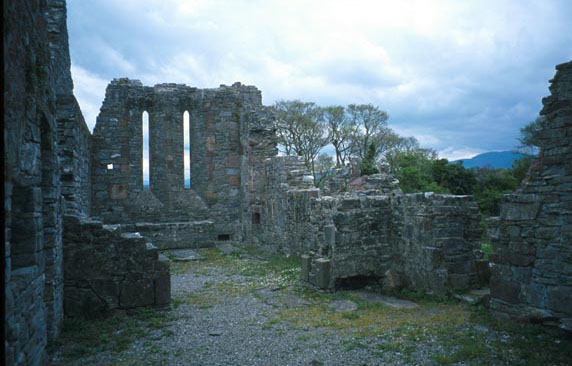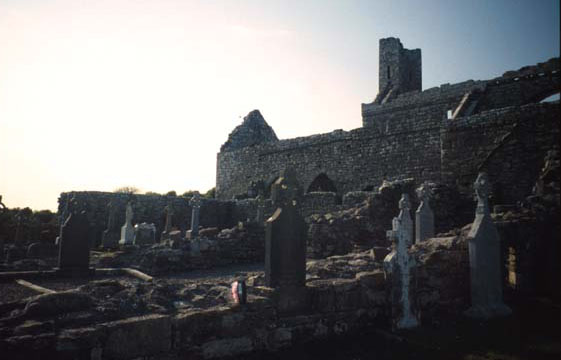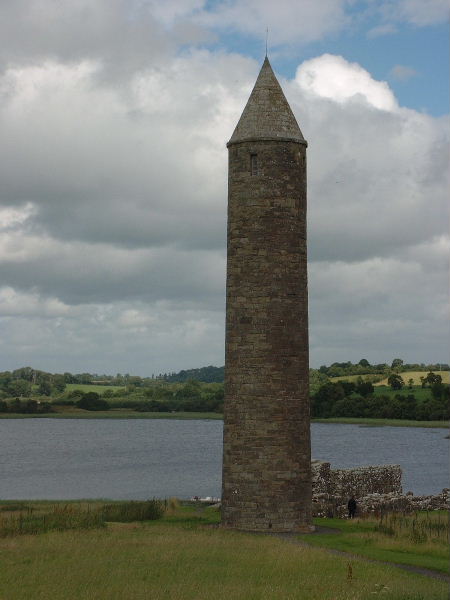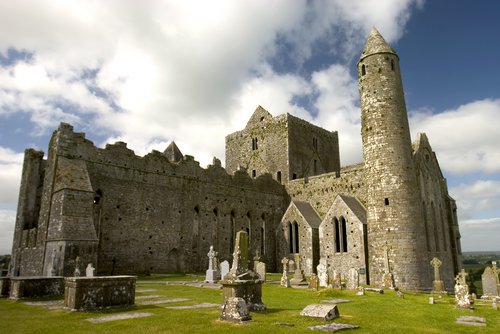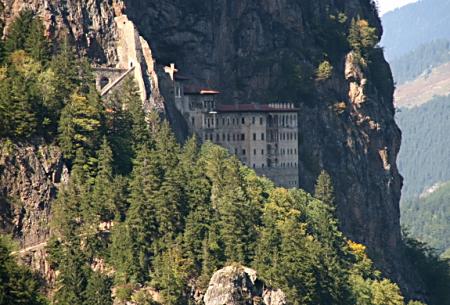I'm gonna leave some of the Roman stuff aside for lack of time and because I've recently come to the conclusion that's it not really productive to argue on the internet. Not that I think we'd necessarily be arguing, but a lot of what we've both mentioned depends very much on what exactly we variously mean by scale, what exact period we're speaking of, and whether we mean the Western Roman Empire or the Eastern Roman Empire. (I gotta admit that personally speaking I am biased in favor of the Eastern rather than the Western Empire, even if I don't specifically mention it when I'm talking. So I might be talking about the Western Empire, the Eastern empire, or both, unless I clarify. I do though find your method of communicating over the intent by embedding explanatory or expanding links into your writings to be an interesting method. I've motioned it to others as a potentially very useful method of "information compression" for using the internet. Illustration without having to illustrate or explain everything yourself in detail. Leave the details up to your links. You do that more than anyone else on the internet I've ever seen, and it does potentially strike me as useful.) Usually though I just generalize due to lack of time.
And that would involve a lot of discussion about a lot of details in every case. So I'll just say I agree to an extent with your points, and I disagree to an extent, but I think a lot of it could be resolved had we the time to fully flesh out the particulars.
For instance let me use an example we've already discussed. Saint Benedict is considered the founder, or at least co-founder of Western monasticism. However Saint Columba re-established Western monasticism in the West (and it had already existed there) about concurrent to Benedict, just not in a way similar to most Western monasticism. On a model that was eventually suppressed and failed, generally speaking. So although the Irish monks existed prior to the Rule of Benedict, as they did in the East, they were not historically successful in the West. For instance the Benedictines still famously exist. So, was Benedict the Founder of Western monasticism, or was Saint Columba? Or maybe Saint Basil? Or could the Byzantine orders not be said to be the original Western monks since at that time the Empire was still united to some greater or lesser degree?
Well, a lot depends on how you define the term monasticism, whether you mean was it a successful movement or not, where did it come from, how long did it last, who are you talking to and what's their interest in the subject, etc? As the old saying goes, "details dispute, and facts occlude."
So whereas I generally think there's a right answer, or at least a best answer to most every question (I'm no relativist), I'm willing (or maybe just long enough in the tooth) to concede that even best answers often have some very fine and reasonable points of disagreement.
This is a very interesting point, especially the Buddhist angle. I know the 'Gaelic' Monasteries in Ireland and the British isles in the early Medieval period were more organized more like the Orthodox model, and this wasn't changed until around the 12th Century IIRC.
That's my understanding too. The so-called Orders of Columba and Columban, of Irish monasticism. Those orders were much more Orthodox in nature, especially in matters of asceticism, and far more loosely organized. They, and their native descendents were also really big on learning and preserving all sorts of intellectual matter (scared and secular) before it was really fashionable in most other monasteries and orders, not that many other orders and monasteries didn't do a good job at data preservation as well. But the Columban orders were basically suppressed in mainland Europe for both political and intellectual reasons so those orders died on the vines eventually.
I particularly like these orders though because of their association with Patrick (also one of my favorite non-Biblical Saints), because of the ways in which they were sort of similar to Byzantine monasticism, the way they revered information, and the way they were far "looser" and more adaptable than many other Orders. In college, while preparing for the seminary, I actually wrote up a Rule for a monastic Order of married Monks and their families, and I based it far more on the Irish and Byzantine orders than on Western orders. I wish I could find that thing but I lost it moving over the years. I've thought recently though about just trying my hand at re-writing it.
Very interesting, sounds like you know more about cyphers than I do. I think this is a really cool angle for RPGs, especially for your Call of Cthulhu type clues and hand-outs... maybe you could elaborate a little on some ways this can work. I'm also interested in 'cants' etc.
I'm not sure cause I don't know how much you know, but maybe we just know different things about codes and ciphers and crypts. After all nobody knows everything about anything. So maybe we just know different aspects of the same subject matter.
As for adventures I can see adventures arising from smuggling, translations (and translation errors), and the building of both mechanical and magical encryption and encoding devices, similar to the Wheel you mentioned. (A Wizard and/or Sage for instance might build a particularly brilliant mechanical encoder/decoder, and a Sorcerer might build a device which could magically translate any language while also encoding/decoding anything that might be desired. Somebody might even build a complex mathematical encryption machine, similar to the Difference or Analytical Engine, a sort of magical or mechanical computer. With various uses. Such a thing, if others could be made to understand what it does, would be a powerful artifact or device which gives one great advantages over one's political and military enemies. that's basically what I'm leaning towards right now as far as new adventures in my milieu.)
As for other ideas one I've pursued off and on over time are the
Glyphing Wars.
The Glyphing Wars occur in my setting in the Byzantine Empire and in parts of Africa and Asia as a sort of "underground movement or War" between humans and others involved in magic and sorcery.
Glyphs can be used as codes of course, and as a magical script (with each glyph having particular magical properties of its own), as communication methods and devices (sometimes magically, and over long distances), and as multi-layered functions of each of those things. Also Glyphs can be used as tools to subtly manipulate the thoughts, psyche, and behavioral inclinations of others, as well as have mass or group effects sometimes.
And I've used glyphs as you described above, where a work seems to be related a coded message or communication in glyphs, and the glyphs are also covertly reshaping reality or reshaping thought and action. (I like magic that works when others don't know it is working, or have no or very little control over it.) Feeding disinformation, charming others, inducing strange behavior, etc.
Glyphs can also be used, depending on how they are shaped and written and arranged in sequence, to disrupt magical effects, to create new magic's, to help devise and invent technologies, to create new languages, and so forth and so on. About the only thing they can't do is effect Miracles or Relics, though they can be sued to alter or disrupt the way miracles and relics seem or appear to operate. They can't curse a relic or a Miracle of God, but what they can do, if employed destructively or evilly, is to make a miracle or relic seem to malfunction or to act in some manner contrary to its nature, even though in reality it is only the perception of the thing that has been altered, not the reality.
Well, given those things, imagine a Glyphing Machine being created. It too would be a powerful artifact, maybe even a very small one, but it could have multiple functions. You could possibly build an entire campaign around a Glyphing Machine, and of course those ideas are hardly exhaustive. What about a talking Glyphing Machine that has a built in magical charisma and that can be secretly programmed? That's just to give an idea of something I'm thinking of.
Anywho you could do a lot with ciphers, codes, and crypts and the devices that employ them, especially when mixed with magic and/or inventive innovation.
For instance think of a
Voynich manuscript filled with illustrations and scripts that are really secretly glyphs in disguise or in another form? Or of a Glyphing Machine that could secretly or covertly encode the ambient, natural, or associated environment? Such things would be very dangerous and powerful indeed. Not least of which because no-one knows or understands what they are really doing.
Yes probably, but to a somewhat limited degree - rather like teaching knife fighting to modern Marines, they might do it mostly for morale, it has benefit but somewhat limited. Keep in mind warfare in this era was more about guns, pikes, and cannons than individual heroes contending in one on one duels.
We know most of the fechtbuchs were associated with civilians of the Burgher class, mostly for judicial combat, and with the fencing Guilds, which did have some military overlap. Almost all the manuals teach one on one fighting though.
But there is no doubt the Aristocrats had their own personal fighting systems which were taught in their own courts and castles, and there does appear to be some overlap with the Fechtbuchs, for example Ott Jud was a court martial arts (wrestling) instructor for a German count IIRC.
I'm gonna have to research this in detail when I get the chance. Sounds very interesting indeed.
Maybe even worth becoming involved with as an archaeological expedition or study.
Well, I gotta scoot.
Lunch break is over, my time is up, and my kids have music lessons this afternoon.
See ya later.
P.S.: One other thing I just thought of.
Changing the nature of how something operates by changing the language and Script in which it is written.
For instance changing the way Magic works when a magical text or tome is translated into a language considered a Holy or Sacred Language. Say you translate a book on magic or containing spells, written in a Magical Script, into Hebrew, or High Church Latin? How might that affect the way the magic works?
Of course the same could be said to be true of vernacular scripts. If you translate magical scripts into more common languages does that do away with or dispel or disrupt the magic, or does it change it and the way it operates in either subtle or drastic ways?
What about a book on miracles, relics, and thaumaturgy (miracle working, or Divine magic)? If that is translated either into a vernacular script or a magical script then how does that affect the Divine magic?
The de facto game assumption is that imperfect or non-intentional or altered translation or transcription either disrupts or dispels written magical effects.
What if it did neither, but
just changed, altered, or mutated magical and miraculous scripts, how they operated, and the amounts and details and types of power they demonstrated?
Anyways, gotta relaly go now.



